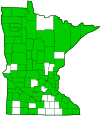field sagewort
(Artemisia campestris ssp. caudata)
Conservation • Wetland • Description • Habitat • Ecology • Use • Distribution • Taxonomy
Description |
||
Field sagewort is a 8″ to 32″ tall, erect, biennial or short-lived perennial forb that rises on usually 1, sometimes 2 to 5 stems from a large taproot. Unlike most Artemisia species, the leaves and stem are not fragrant or are only slightly fragrant when crushed. In the first year it forms a rosette of basal leaves. In the second year it send up a flowering stem. It usually dies after bearing fruit once. The stems are erect or ascending, usually unbranched, and hairless at maturity. They are green at first, eventually turning reddish-brown. Basal leaves are numerous, green, feathery in appearance, 1½″ to 4¾″ long including the leaf stalk, and up to 1½″ wide. They are deeply cut into 3 to 7 primary lobes (pinnatifid). The primary lobes are again divided into secondary lobes (bipinnatifid), which may be once more lobed (3 times pinnatifid). The ultimate lobes are mostly sharply pointed at the tip, narrowly linear, and 1 ⁄50″ to 1 ⁄16″wide. The upper and lower surfaces are sometimes sparsely to moderately covered with fine, white, cobwebby hairs when young, but are hairless when mature. The margins are untoothed. Basal leaves and lower stem leaves are usually withered by flowering time. Stem leaves are similar, alternate, ¾″ to 1½″ long, and 3 ⁄16″ to ⅝″ wide, becoming gradually smaller and less divided as they ascend the stem. They do not have leaf-like stipules or stipule-like lobes at the base. The inflorescence is a narrow, elongated, branched cluster (panicle) of numerous flower heads at the end of the stems and branches. The panicles are 4¾″ to 11¾″ long, ⅜″ to 3⅛″ wide, and mostly leafless. The flower head is small, top-shaped, and inconspicuous. The whorl of bracts at the base of the flower head (involucre) is about 1 ⁄16″ long and 1 ⁄16″ wide. On the margin of the disc are 5 to 20 pale yellow ray florets with both stamens and pistils that are fertile and produce fruits. In the center are 12 to 30 pale yellow disk florets that also have both stamens and pistils, but have abortive ovaries and do not produce fruits. There is no floral scent. The fruit is a tiny achene. |
||
Height |
||
8″ to 32″ |
||
Flower Color |
||
Pale yellow |
||
Similar Species |
||
Northern sagewort (Artemisia borealis) is a shorter plant, no more than 15¾″ tall. It is usually in the form of a 4″ to 12″ tall mound. The panicles are much shorter, 3″ to 4″ long, with fewer but larger heads. The involucres are globe-shaped, not top-shaped, and are larger, ⅛″ long and ⅛″ to 3 ⁄16″ wide. |
||
Habitat |
||
Dry. Prairies, woods. |
||
Ecology |
||
Flowering |
||
Late July to mid-September |
||
Pests and Diseases |
||
Gall midge (Rhopalomyia artemisiae) creates globular galls at the tip or in the leaf axils. Gall midge (Rhopalomyia baccarum) creates fleshy galls on the stems. |
||
Use |
||
|
||
Distribution |
||||
|
Sources |
|||
| 10/22/2021 | ||||
Nativity |
||||
Native |
||||
Occurrence |
||||
Common |
||||
Taxonomy |
|||
| Kingdom | Plantae (Plants) | ||
| Division | Tracheophyta (Vascular Plants) | ||
| Subdivision | Spermatophytina (Seed Plants) | ||
| Class | Magnoliopsida (Dicots) | ||
Order |
Asterales (Sunflowers, Bellflowers, Fanflowers, and Allies) | ||
Family |
Asteraceae (Sunflowers, Daisies, Asters, and Allies) | ||
| Subfamily | Asteroideae | ||
| Supertribe | Asterodae | ||
| Tribe | Anthemideae (chamomiles, yarrows, and allies) | ||
| Subtribe | Artemisiinae | ||
| Genus | Artemisia (wormwoods and sagebrushes) | ||
| Species | Artemisia campestris (Pacific wormwood, field wormwood, field sagewort) | ||
Synonyms |
|||
Artemisia campestris var. caudata Artemisia caudata Artemisia caudata var. calvens Artemisia forwoodii Oligosporus campestris ssp. caudatus Oligosporus caudatus |
|||
Common Names |
|||
beach wormwood field sagewort field sage-wort field wormwood Pacific wormwood tall wormwood |
|||
Glossary
Achene
A dry, one-chambered, single-seeded seed capsule, formed from a single carpel, with the seed attached to the membranous outer layer (wall) only by the seed stalk; the wall, formed entirely from the wall of the superior ovary, does not split open at maturity, but relies on decay or predation to release the contents.
Bipinnatifid
Twice pinnatifid. Cut deeply into lobes with each lobe also cut into deep lobes.
Involucre
A whorl of bracts beneath or surrounding a flower, flower head, or flower cluster.
Panicle
A pyramidal inflorescence with a main stem and branches. Flowers on the lower, longer branches mature earlier than those on the shorter, upper ones.
Pinnatifid
Deeply cut, more than half way to the midrib but not to the midrib, into lobes that are spaced out along the midrib; the lobes do not form separate leaflets.
Rhizome
A horizontal, usually underground stem. It serves as a reproductive structure, producing roots below and shoots above at the nodes.
Stipule
A small, leaf-like, scale-like, glandular, or rarely spiny appendage found at the base of a leaf stalk, usually occurring in pairs and usually dropping soon.
Visitor Photos |
|||||
Share your photo of this plant. |
|||||
| This button not working for you? Simply email us at info@MinnesotaSeasons.com. Attach one or more photos and, if you like, a caption. |
|||||
Nancy Falkum |
|||||
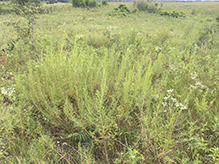 |
|||||
MinnesotaSeasons.com Photos |
|||||
Young Plant |
|||||
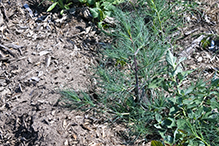 |
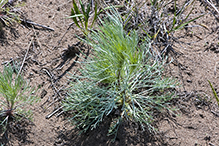 |
||||
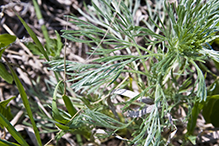 |
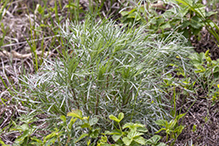 |
||||
Mature Plant |
|||||
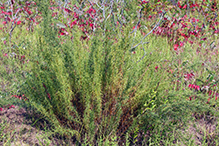 |
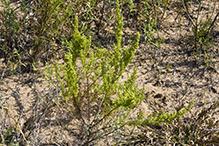 |
||||
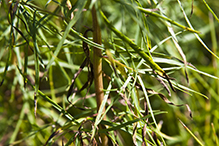 |
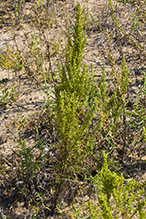 |
||||
Inflorescence |
|||||
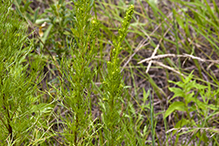 |
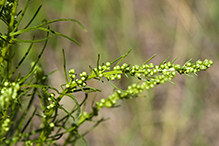 |
||||
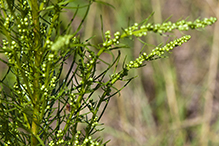 |
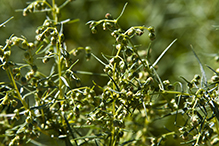 |
||||
Leaves |
|||||
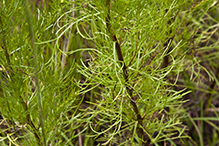 |
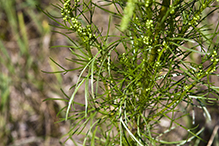 |
||||
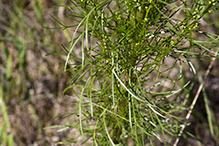 |
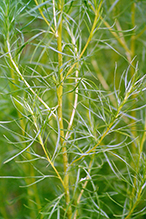 |
||||
Stem |
|||||
 |
|||||

Slideshows |
||
| Artemisia campestris Matt Lavin |
||

|
||
About
Native taprooted biennial or perennial herb to 50 cm tall, basal leaf rosette well developed before withering and disintegrating, grayish green stem leaves pinnately dissected, contrasting against reddish stems. Distal stems can be confused with those of A. dracunculus if leaves are not carefully observed. Roadsides, trailsides, and similarly disturbed settings. |
||

Visitor Videos |
|||
Share your video of this plant. |
|||
| This button not working for you? Simply email us at info@MinnesotaSeasons.com. Attach a video, a YouTube link, or a cloud storage link. |
|||
Other Videos |
|||

Visitor Sightings |
|||||
Report a sighting of this plant. |
|||||
| This button not working for you? Simply email us at info@MinnesotaSeasons.com. Be sure to include a location. |
|||||
| Nancy Falkum 7/22/2021 |
Location: Kellogg Weaver Dunes SNA, Weaver Dunes Unit |
 |
|||
MinnesotaSeasons.com Sightings |
|||||
Felton Prairie SNA, Bicentennial Unit Kellogg Weaver Dunes SNA, Kellogg Weaver Unit Lake Alexander Woods SNA, South Unit Northern Tallgrass Prairie NWR, Hoffman Unit Northern Tallgrass Prairie NWR, Rengstorf Unit Pankratz Memorial Prairie, North Unit Pembina Trail Preserve SNA, Crookston Prairie Unit |
|||||

|
Created: Last Updated: © MinnesotaSeasons.com. All rights reserved. |
